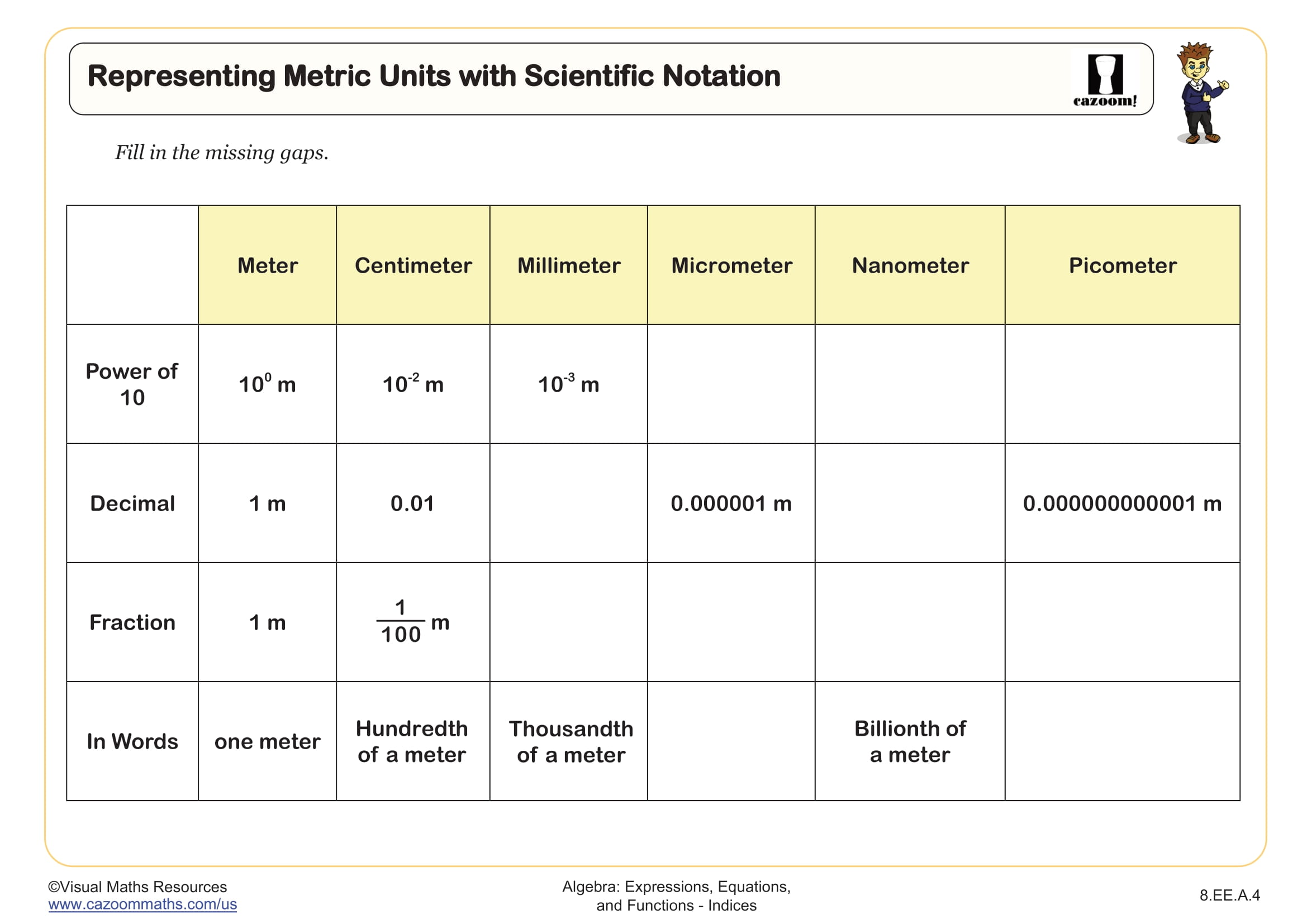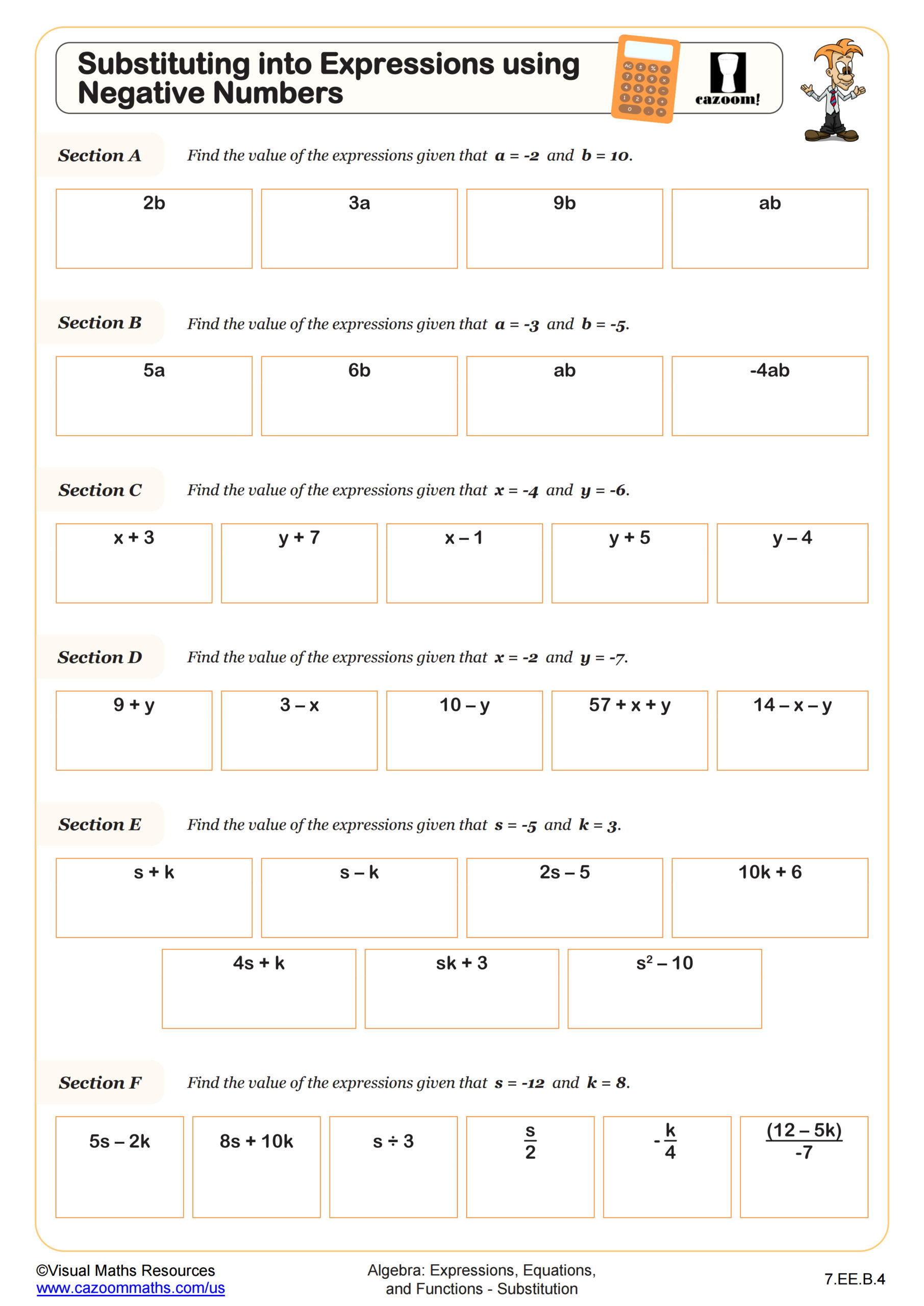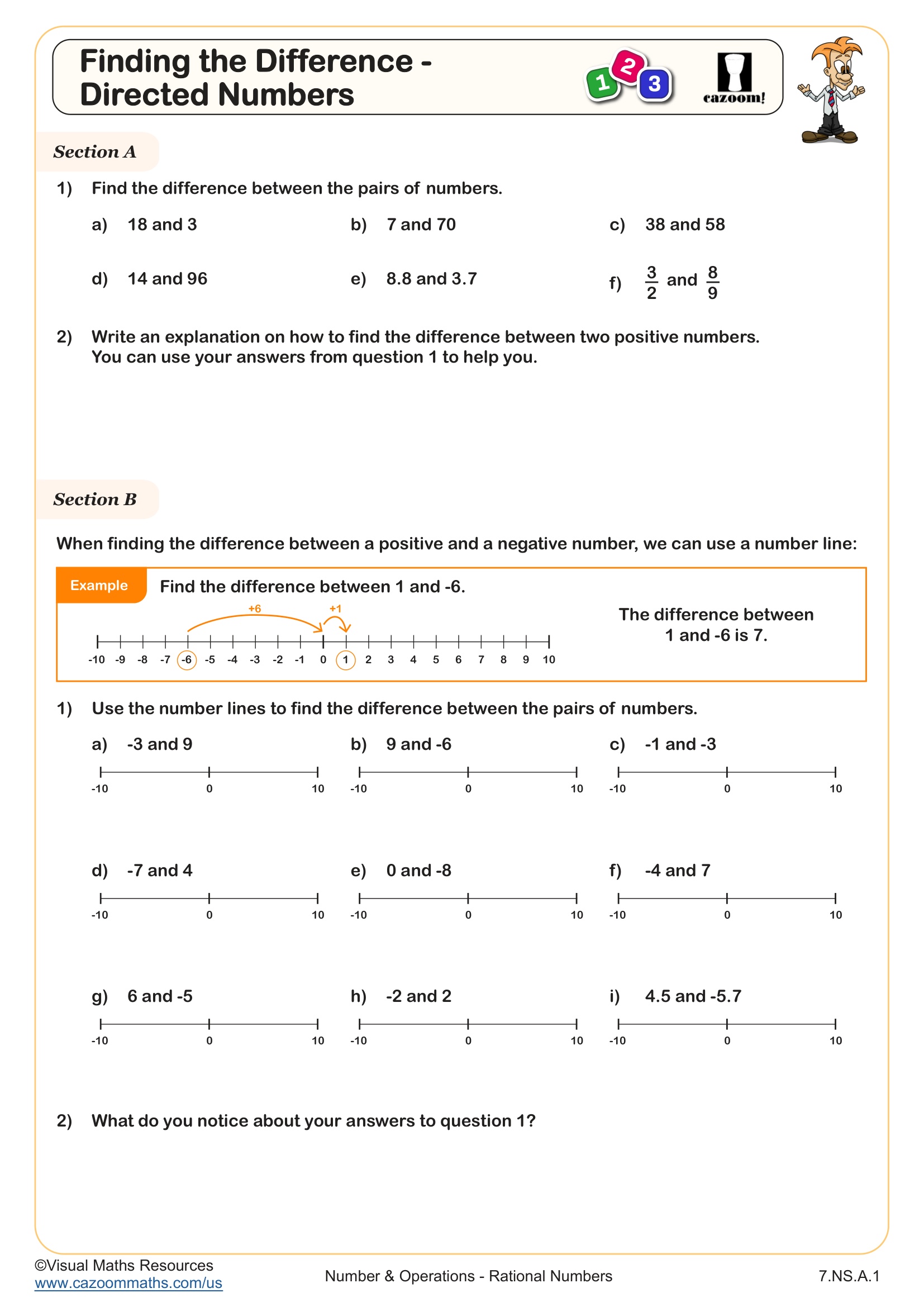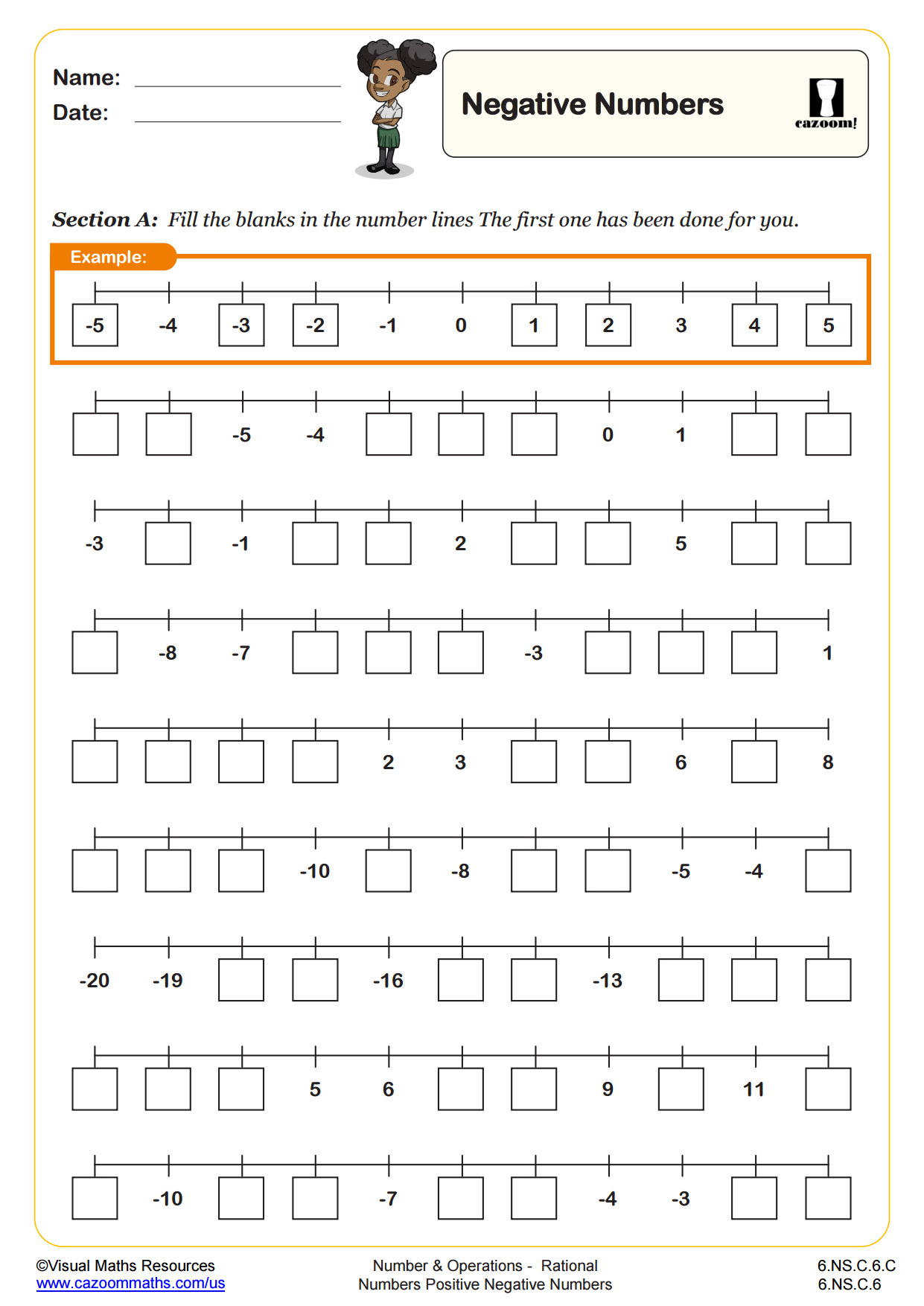Back to:
Adding Integers - Number Search WORKSHEET
Suitable for Grades: 7th Grade
CCSS: 7.NS.A.1
CCSS Description: Apply and extend previous understandings of addition and subtraction to add and subtract rational numbers; represent addition and subtraction on a horizontal or vertical number line diagram. a. Describe situations in which opposite quantities combine to make 0. For example, a hydrogen atom has 0 charge because its two constituents are oppositely charged. b. Understand p + q as the number located a distance |q| from p, in the positive or negative direction depending on whether q is positive or negative. Show that a number and its opposite have a sum of 0 (are additive inverses). Interpret sums of rational numbers by describing real-world contexts. c. Understand subtraction of rational numbers as adding the additive inverse, p – q = p + (–q). Show that the distance between two rational numbers on the number line is the absolute value of their difference, and apply this principle in real-world contexts. d. Apply properties of operations as strategies to add and subtract rational numbers.
Adding Integers - Number Search WORKSHEET DESCRIPTION
This fun number search involves students finding sets numbers that sum to 1 and is perfect for students getting used to addition that crosses zero, the commutativity of addition, and addition involving negative and positive numbers.
Numbers can be combined horizontally, vertically, and diagonally, and may contain up to four numbers. Our answers show numbers being used more than once, but teachers and parents can make up their own minds on this rule. Why not add a competitive edge: who will find the most? Who will be the first to find 30 sets of numbers that sum to 1?
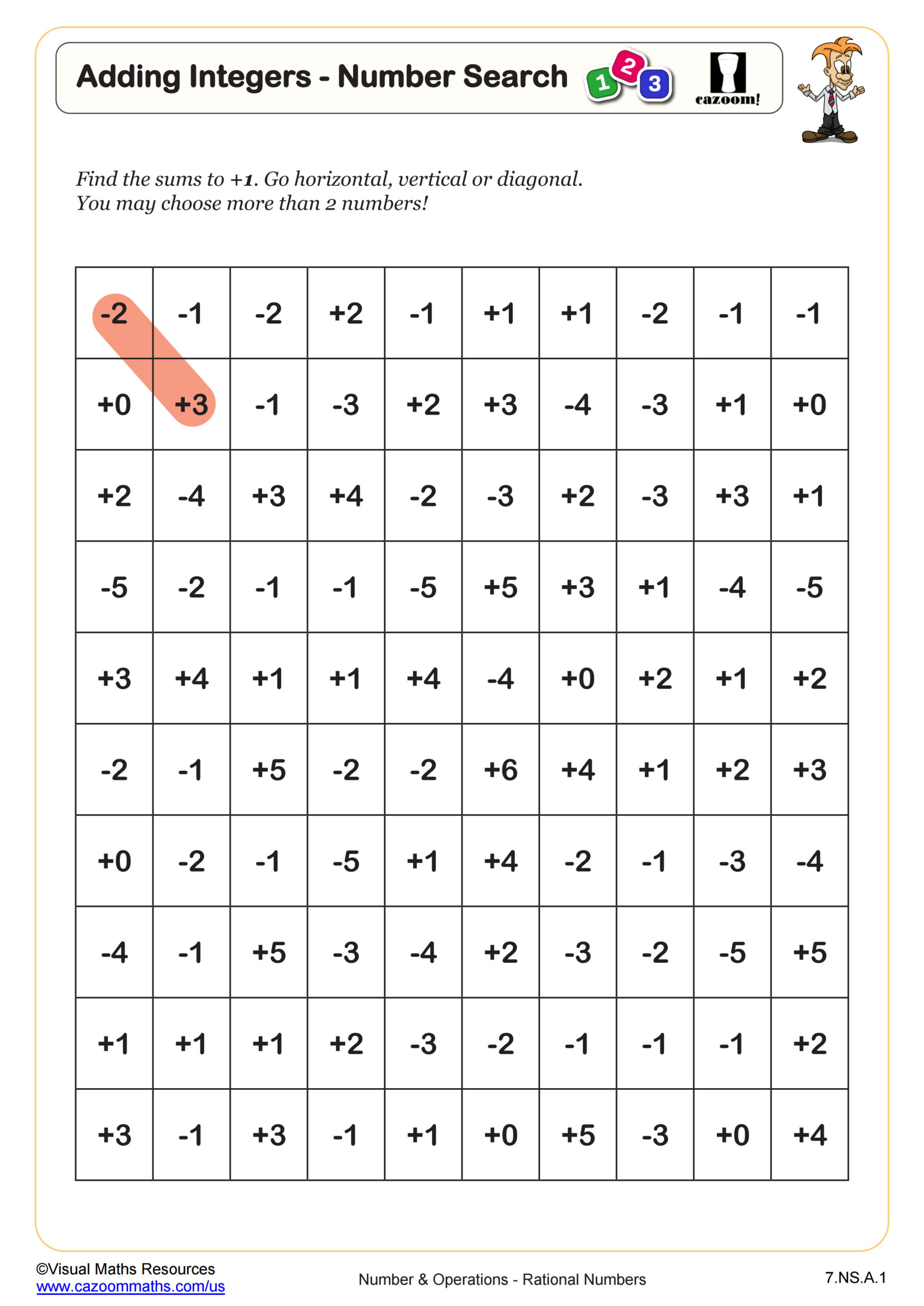
RELATED TO Adding Integers - Number Search WORKSHEET
Frequently Asked Questions
This adding integers - number search worksheet is designed for students in 7th Grade and aligns with Common Core State Standards.
